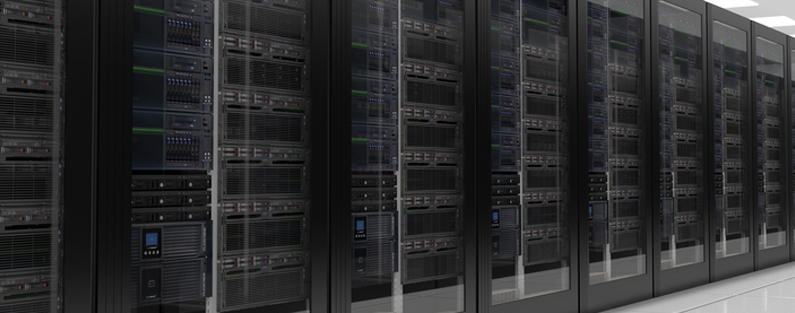04 August 2017
Options for enterprise data storage
Posted in Blogs

Local data centre, hybrid cloud or cloud? As an enterprise IT manager, you have an unprecedented amount of choice for your storage needs, but finding the best solution still requires a good deal of research.
Enterprise storage has been all the rage over the past few years as companies cope with vast amounts of data and vendors roll out innovative solutions designed to take vital factors such as power consumption, scalability, legal considerations, business processes, security and accessibility into account.
The first objective of your storage solution should be its ability to enable file sharing and collaboration among your staff. You can then worry about performance, reliability, availability and scalability of your solution.
In the end, your choices centre on storing your data on-site, somewhere else (the cloud) or a combination of both (a hybrid solution).
On-site storage
The advantage of storing data on-site is that you retain full control of the hardware and data, which should also meet most of your security and compliance concerns if your backup and disaster recovery (DR) systems are up to date.
Deploying a storage network on-site usually involves a three-step process: setting up the physical hardware, migrating your data, and configuring and testing the system.
You’ll also need to select the appropriate storage media. Tapes, hard disk drives (HDDs) or solid state disks (SSDs) all have their pros and cons. Tape is generally inexpensive, but its performance makes it suitable mainly for backup and archive functions only. HDDs offer higher performance for primary, more accessible data, whereas SSDs generally provide the best performance and reliability. Most enterprises use a combination of all three.
Storage architecture is of paramount importance and includes direct-attached storage (DAS), storage area networks (SANs) or network-attached storage (NAS) devices. What you ultimately choose will depend on the collaboration capabilities you want between individual PCs and servers.
The type of storage architecture you choose will also affect the network protocols you use. For example, fibre channel and iSCSI are SAN protocols, while NAS is an IP storage protocol.
Enterprises deploying storage architecture in-house have tended to move away from traditional siloed NAS and SAN solutions to more integrated flash-technology based solutions.
Cloud-based storage
Cloud-based storage has been the talk of the global IT community for years now, with many of the biggest solutions pioneered by Google, Amazon and Facebook.
Cloud solutions have the advantage of saving space, simplifying management and generally lowering costs. They also provide on-demand capacity which is easily scalable for future needs.
Perhaps the biggest advantage of cloud storage solutions is that you’re relieved from making decisions about hardware and network architecture, because the cloud vendor takes care of that for you. Once you’ve found a solution you’re happy with, it’s relatively easy to configure it to work with your current IT infrastructure.
Hybrid solutions
The best storage solution for many enterprises tends to be a hybrid one containing in-house and cloud components.
This typically involves keeping essential data in-house and using cloud-based services for lower priority data. On-site data storage is also used for performance (latency and bandwidth, and security).
The enterprise storage sector is undergoing a continual evolution, with technologies such as storage virtualisation, which promises superior archiving, backup and recovery administration coming to the fore.
Hybrid storage solutions are also being used to optimise application performance, while software-based systems are becoming more ubiquitous, offering end users a far greater range of storage and backup options.



